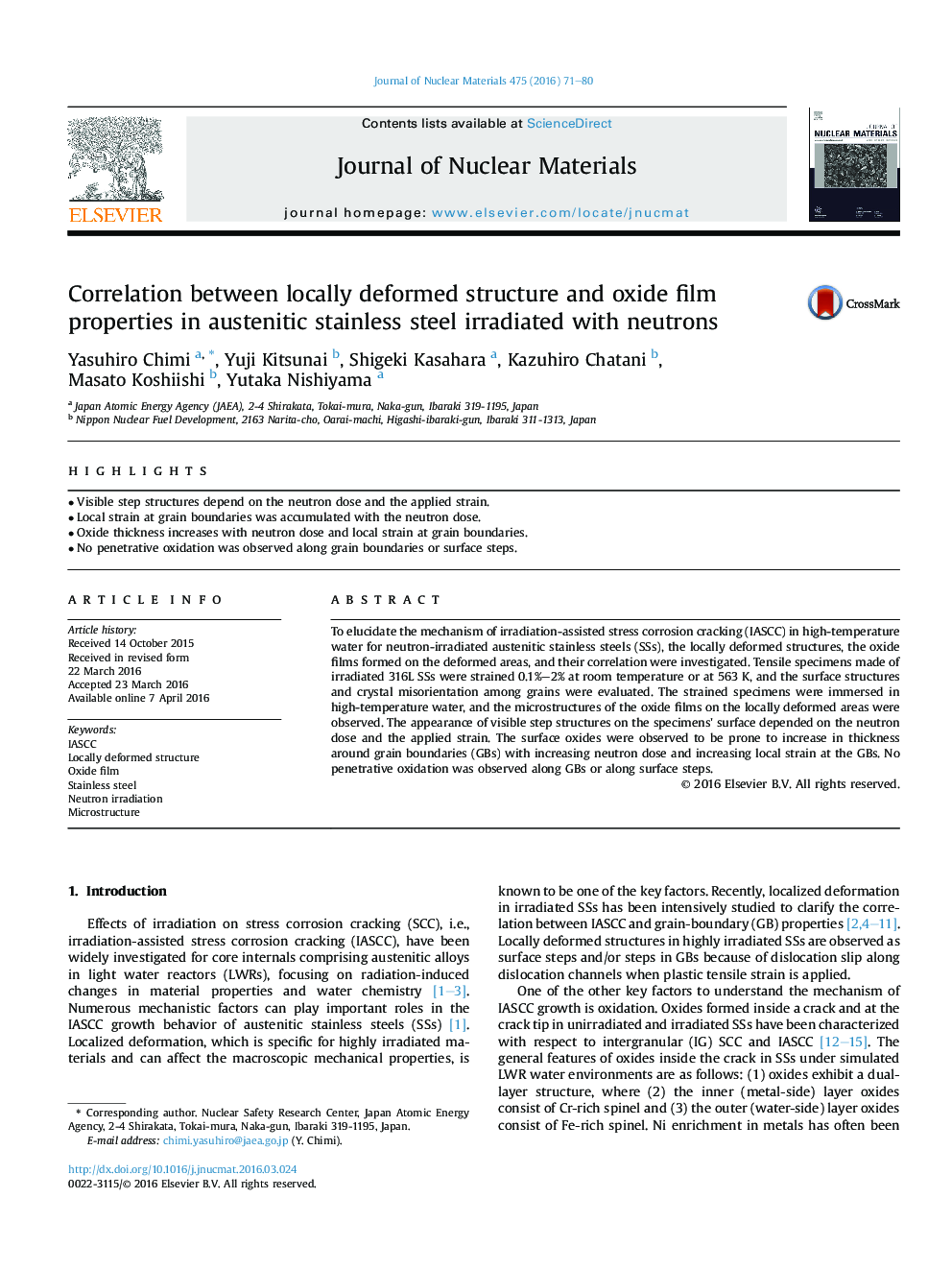| Article ID | Journal | Published Year | Pages | File Type |
|---|---|---|---|---|
| 7964260 | Journal of Nuclear Materials | 2016 | 10 Pages |
Abstract
To elucidate the mechanism of irradiation-assisted stress corrosion cracking (IASCC) in high-temperature water for neutron-irradiated austenitic stainless steels (SSs), the locally deformed structures, the oxide films formed on the deformed areas, and their correlation were investigated. Tensile specimens made of irradiated 316L SSs were strained 0.1%-2% at room temperature or at 563Â K, and the surface structures and crystal misorientation among grains were evaluated. The strained specimens were immersed in high-temperature water, and the microstructures of the oxide films on the locally deformed areas were observed. The appearance of visible step structures on the specimens' surface depended on the neutron dose and the applied strain. The surface oxides were observed to be prone to increase in thickness around grain boundaries (GBs) with increasing neutron dose and increasing local strain at the GBs. No penetrative oxidation was observed along GBs or along surface steps.
Related Topics
Physical Sciences and Engineering
Energy
Nuclear Energy and Engineering
Authors
Yasuhiro Chimi, Yuji Kitsunai, Shigeki Kasahara, Kazuhiro Chatani, Masato Koshiishi, Yutaka Nishiyama,
